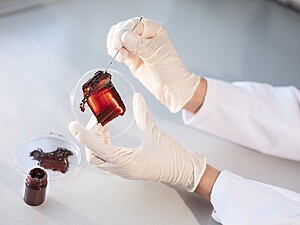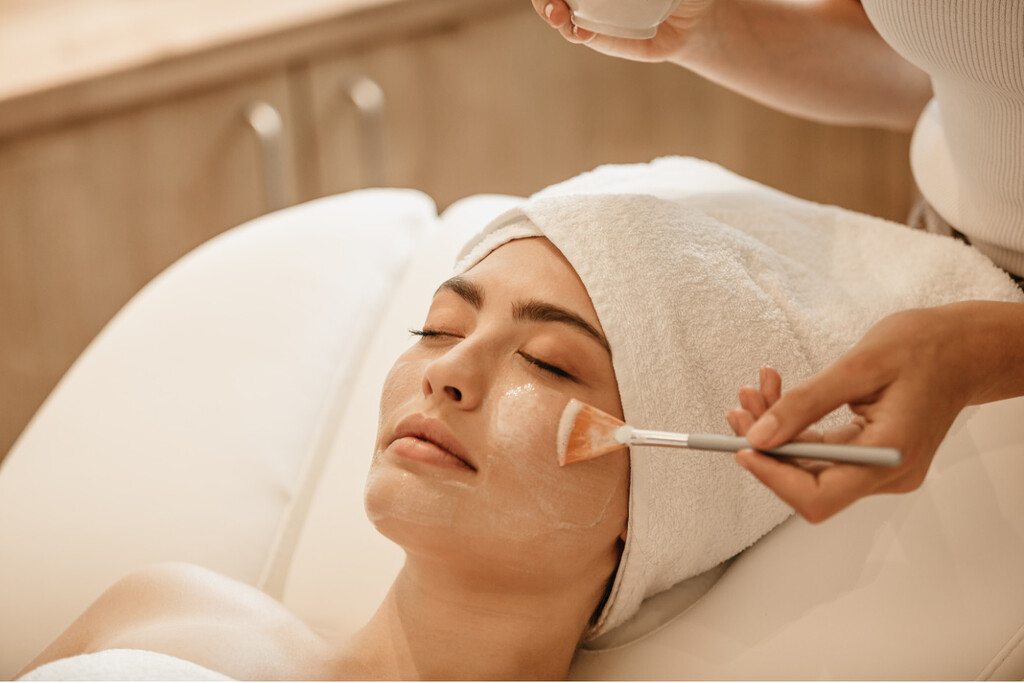Interview: ASTACOS® OL50 – formulating with the red diamond
Abstract
BDI-BioLife Science is a young company that focuses on the development of innovative and sustainable algae-based ingredients. For the past 15 years, the company has been dedicated to the cultivation of the astaxanthin-rich microalgae Haematococcus pluvialis. Constant improvements have led to a unique cultivation system that was developed in-house. Today, the company produces astaxanthin in Styria – the “green heart” of Austria – and offers scientifically researched raw materials for a wide range of applications in the food supplement and cosmetic industry. Astaxanthin is the strongest natural antioxidant that can protect the human organism through oral and topical application due to its special molecular structure. BDI-BioLife Science has developed a special COSMOS-certified and NATRUE-approved active ingredient to include this unique antioxidant in cosmetic formulations. ASTACOS® OL50 is a vegan, animal testing-free ingredient, derived from the microalga Haematococcus pluvialis, containing 5% of natural astaxanthin.
Katharina Müller, former Head of Product Development and Product Management at BDI-BioLife Science, will outline the advantages of ASTACOS® OL50 and explain how the ingredient is incorporated into formulations.
There are so many different types of antioxidants – why are you convinced of astaxanthin respectively ASTACOS® OL50 as a must-have in cosmetics?
ASTACOS® OL50 includes the strongest natural antioxidant, astaxanthin. Low dosages (0.01% to 0.1% of ASTACOS®OL50) of this active ingredient in a formulation have achieved really great results in various studies, and that effect truly convinced me. The naturalness of the raw material in combination with the scientific approach to production fascinates me. Besides the Cosmos certification and Natrue approval, the fact that ASTACOS® OL50 is vegan is also worth mentioning. Its enormous antioxidative potential which is based on the special structure of lipophilic and hydrophilic end groups in combination with the long-chain basic structure of astaxanthin deserves special attention. I also like the fact that you can see the activity of ASTACOS® OL50 in the colour of the product. The overall ASTACOS® OL50 package is completed by in vivo and in vitro studies which highlight the unique effect.
Which claims of ASTACOS® OL50 would you particularly want to mark out, and in which formulations do you see the greatest potential for the ingredient?
Astaxanthin has great antioxidant potential when it comes to neutralising ROS. Through this improved biological cell protection, harmful oxidation processes in the cells are stopped. Thus, long-term damage to the skin, such as wrinkles, can be minimised. Therefore, when it comes to anti-ageing applications, we consider particularly astaxanthin as antioxidant. As natural and highly effective raw materials are currently trending, the use in natural products is recommended. Of course, it also makes sense to use ASTACOS® OL50 in case of increased stress situations, for example after intensive sun radiation. Therefore, the use of ASTACOS® OL50 in sun care products is also recommended.
You mentioned the colour in the finished product which is created by adding ASTACOS® OL50. Could you tell us about the photostability of the product? Have tests already been performed on this matter?
In general, it should be pointed out that ASTACOS® OL50, in contrast to other carotenoids, has a very good colour stability. I personally have some finished product samples containing ASTACOS® OL50 in my office that still show excellent colour after several months. Indeed, BDI-BioLife Science is aware of the colour topic and has, therefore, initiated an accelerated weathering test in which two other natural dyes (beetroot and carmine) and ASTACOS® OL50 were compared. In this test, each sample was benchmarked against its own ref erence, and ASTACOS® was the only product that had not lost colour after 15 hours of strong irradiation. In addition, finished frame formulations were also tested, and the result was that no degradation occurred regarding colour or smell.

Figure 1: ASTACOS® FACE Astaxanthin Refresh (form. asta2PHASE) after 48h of excessive irradiation at 50w/m2 in the UV/VIS irradiation chamber (Opsytec Dr. Gröbel GmbH) leads to no changes.
Due to the mechanism of action as well as the colour, ASTACOS® OL50 can definitely be considered a special raw material. Do you have any other recommendations for the operator?
ASTACOS® OL50 is a fat-soluble extract from the alga H. pluvialis, but there are also natural ways to dissolve the active ingredient in the water phase. With the addition of solubilisers, the oil phase has to be treated very carefully in terms of stability and oxidation. I will give you a piece of advice for using ASTACOS® OL50: an acidic pH proves extremely beneficial for high product stability and creates a balanced formulation for the skin.

Figure 2: ASTACOS® OL50, oleoresin with an astaxanthin content of 5%.
As an Austrian company, BDI-BioLife Science cultivates microalgae in Styria and is the largest central European producer of astaxanthin. What advantage do you see in European high-tech production?
Production in the heart of Europe offers many benefits: on the one hand, a “made in Austria” label is recognised worldwide. On the other hand, there is also the question of supply security, especially since the beginning of the COVID-19 pandemic. All-year delivery is ensured with BDI as a partner because of the company’s long-term plant expertise, while the special know-how influences the product quality. As mentioned above, the quality of ASTACOS® OL50 has been proven by numerous certificates.
Statement by Roman Ott, Head of Application Technology at RAHN Group:

“It continually surprises me how secrets of nature with their impressive efficacy can be successfully transferred to cosmetics.”


